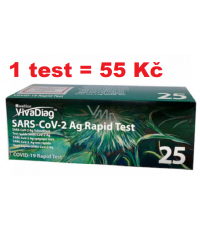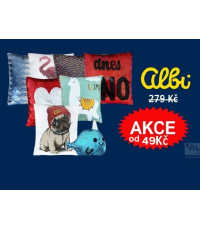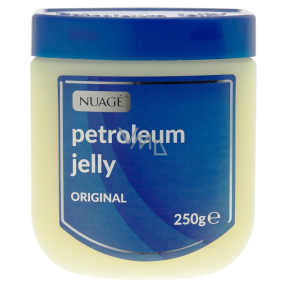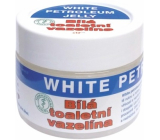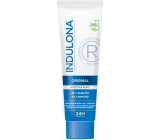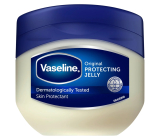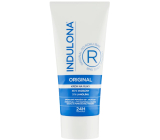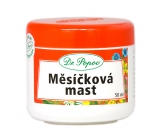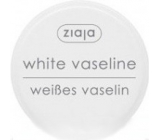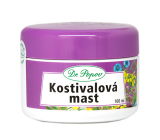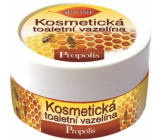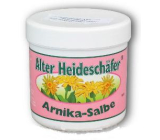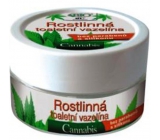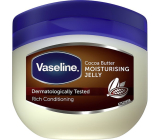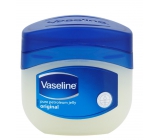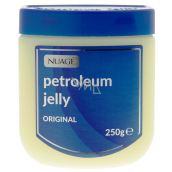Silverlene Nuagé Petroleum Jelly Original kerosene ointment for dry, cracked skin, sores, scalings, frostbite 250 ml
| Code: | 1602167 |
| EAN: | 5020535008895 |
| Producer: | Longshawe Packaging Limited, UK |
| Brand: | Silverlene (web) |
 | |
It is applied as a cream. We recommend using Petroleum jelly as a protective cream while working, but also after washing your hands. In winter, apply before going outdoors. Vaseline prevents painful facial chafing and chapped lips. After Pumice treatment, rub Petroleum jelly thoroughly into the soles of the feet, especially the skin on the heel.
Vaseline follows the legendary discovery of Robert Chesebrough, who invented Vaseline in 1859. due to its extremely positive effects on human skin, Vaseline was immediately in great demand and is still recommended by leading skin experts today.Vaseline is unique in its ability to lock moisture in the skin and thus accelerate its natural renewal process. It is thus suitable for the regeneration of minor injuries, scars, burns and also helps to reduce the appearance of fine, dry lines. The unique Vaseline cosmetics will provide your skin with truly first-class care and contribute to your beauty.
Petroleum jelly(also Petroleum jelly or Petrolatum) is a semi-solid mixture of hydrocarbons (with a number of carbon atoms in the molecule mostly higher than 25), originally promoted as an ointment due to its medicinal properties. However, its folkloric medical value as a panacea has been diminished by better scientific recognition of appropriate and inappropriate uses. However, some species are FDA approved for sale in the US without a prescription as a skin protectant and are still widely used in cosmetic care.
The raw material for Petroleum jelly was discovered in 1859 in Titusville, Pennsylvania, at one of the country's first oil wells. The workers did not like the paraffin-like material that formed in the wells because it caused disturbances. However, it was used on wounds and burns because it accelerated healing.
A young chemist, Robert Chesebrough, whose earlier work on distilling fuels from sperm whale blubber had been surpassed by the use of Petroleum, came to Titusville to see which new materials had commercial potential. He took the unrefined black bar wax, as the oilmen called it, to his laboratory for refining and to determine its potential use. Chesebrough discovered that by distilling lighter, thinner oil products from this wax, he could create a light-colored gel. He patented this process for making Petroleum jelly in 1872 (U.S. Patent No. 127,568). The process involves vacuum distillation of the raw material followed by filtration of the distillation residue through charcoal.
Chesebrough traveled around New York City demonstrating the product and recommending it for purchase.For this he etched his skin with acid and burned it with an open flame, then covered these places with a new ointment, and finally showed them cured, as he proclaimed, by his miraculous product.
He opened his first factory in 1870 in Brooklyn. the Vaseline trademark is thought to be derived from the German word for Water, wasser, and the Greek word for oil, elaion, but this is not confirmed.
Physical Properties
Petroleum jelly is a flammable semi-solid mixture of hydrocarbons with a melting point usually around 75 °C or slightly lower. It is colourless or pale yellow (unless highly distilled), translucent, tasteless and odourless in its pure form. It does not oxidize in air and does not react easily with cheMical reactants. It is insoluble in Water. It dissolves in Chloroform, benzene, sulphur carbon and turpentine.
It is a common misconception (based on similar feelings on human skin) that Petroleum jelly and glycerin (glycerin) are physically similar. White Petroleum jelly is non-polar, hydrocarbon, hydrophobic (Water-repellent) and insoluble in Water, whereas Glycerol (which is not a hydrocarbon but an alcohol) has the opposite properties: it is strongly hydrophilic (Water-attracting), so it still absorbs moisture from the air, which is why it produces a moist feeling on the skin, similar to the oily feeling produced by Petroleum jelly. The feeling is similar, but Petroleum jelly repels Water whereas Glycerol attracts it.
Vaseline is often produced by manufacturers of Microcrystalline Waxes and similar materials.
Use: Chesebrough originally recommended Petroleum jelly primarily as an ointment for wounds and burns, but doctors have shown that Petroleum jelly has no medical effect (even against blisters), nor is it absorbed by the skin. Its effectiveness in accelerating the healing of wounds and burns lies in sealing against the penetration of microbes into the wound and against the drying out of the wound.
The First Aid Petroleum Jelly product, which was a Petroleum jelly containing phenol for a stronger antibacterial effect, is no longer manufactured.
Later, however, consumers began to use Petroleum jelly to treat a variety of mild ailments and for cosmetic purposes, such as cracked hands and lips, nail fungus, rashes on male genitalia, nosebleeds, cold sores, and to remove makeup and paint from furniture. In domestic animals it was used against fungi on the shells of Water turtles and in cats against trichobezoars. At the beginning of the 20. century, Petroleum jelly, either pure or as an ingredient, was also popular as a hair pomade. When mixed with equal parts of pure Beeswax, it was used to wax moustaches.
Even Robert Chesebrough ate a spoonful of this Vaseline every day and lived to be 96.
This item has not been discussed yet. If you want to be first, click on the button Add a contribution
It is applied as a cream. We recommend using Petroleum jelly as a protective cream while working, but also after washing your hands. In winter, apply before going outdoors. Vaseline prevents painful facial chafing and chapped lips. After Pumice treatment, rub Petroleum jelly thoroughly into the soles of the feet, especially the skin on the heel.
Vaseline follows the legendary discovery of Robert Chesebrough, who invented Vaseline in 1859. due to its extremely positive effects on human skin, Vaseline was immediately in great demand and is still recommended by leading skin experts today.Vaseline is unique in its ability to lock moisture in the skin and thus accelerate its natural renewal process. It is thus suitable for the regeneration of minor injuries, scars, burns and also helps to reduce the appearance of fine, dry lines. The unique Vaseline cosmetics will provide your skin with truly first-class care and contribute to your beauty.
Petroleum jelly(also Petroleum jelly or Petrolatum) is a semi-solid mixture of hydrocarbons (with a number of carbon atoms in the molecule mostly higher than 25), originally promoted as an ointment due to its medicinal properties. However, its folkloric medical value as a panacea has been diminished by better scientific recognition of appropriate and inappropriate uses. However, some species are FDA approved for sale in the US without a prescription as a skin protectant and are still widely used in cosmetic care.
The raw material for Petroleum jelly was discovered in 1859 in Titusville, Pennsylvania, at one of the country's first oil wells. The workers did not like the paraffin-like material that formed in the wells because it caused disturbances. However, it was used on wounds and burns because it accelerated healing.
A young chemist, Robert Chesebrough, whose earlier work on distilling fuels from sperm whale blubber had been surpassed by the use of Petroleum, came to Titusville to see which new materials had commercial potential. He took the unrefined black bar wax, as the oilmen called it, to his laboratory for refining and to determine its potential use. Chesebrough discovered that by distilling lighter, thinner oil products from this wax, he could create a light-colored gel. He patented this process for making Petroleum jelly in 1872 (U.S. Patent No. 127,568). The process involves vacuum distillation of the raw material followed by filtration of the distillation residue through charcoal.
Chesebrough traveled around New York City demonstrating the product and recommending it for purchase.For this he etched his skin with acid and burned it with an open flame, then covered these places with a new ointment, and finally showed them cured, as he proclaimed, by his miraculous product.
He opened his first factory in 1870 in Brooklyn. the Vaseline trademark is thought to be derived from the German word for Water, wasser, and the Greek word for oil, elaion, but this is not confirmed.
Physical Properties
Petroleum jelly is a flammable semi-solid mixture of hydrocarbons with a melting point usually around 75 °C or slightly lower. It is colourless or pale yellow (unless highly distilled), translucent, tasteless and odourless in its pure form. It does not oxidize in air and does not react easily with cheMical reactants. It is insoluble in Water. It dissolves in Chloroform, benzene, sulphur carbon and turpentine.
It is a common misconception (based on similar feelings on human skin) that Petroleum jelly and glycerin (glycerin) are physically similar. White Petroleum jelly is non-polar, hydrocarbon, hydrophobic (Water-repellent) and insoluble in Water, whereas Glycerol (which is not a hydrocarbon but an alcohol) has the opposite properties: it is strongly hydrophilic (Water-attracting), so it still absorbs moisture from the air, which is why it produces a moist feeling on the skin, similar to the oily feeling produced by Petroleum jelly. The feeling is similar, but Petroleum jelly repels Water whereas Glycerol attracts it.
Vaseline is often produced by manufacturers of Microcrystalline Waxes and similar materials.
Use: Chesebrough originally recommended Petroleum jelly primarily as an ointment for wounds and burns, but doctors have shown that Petroleum jelly has no medical effect (even against blisters), nor is it absorbed by the skin. Its effectiveness in accelerating the healing of wounds and burns lies in sealing against the penetration of microbes into the wound and against the drying out of the wound.
The First Aid Petroleum Jelly product, which was a Petroleum jelly containing phenol for a stronger antibacterial effect, is no longer manufactured.
Later, however, consumers began to use Petroleum jelly to treat a variety of mild ailments and for cosmetic purposes, such as cracked hands and lips, nail fungus, rashes on male genitalia, nosebleeds, cold sores, and to remove makeup and paint from furniture. In domestic animals it was used against fungi on the shells of Water turtles and in cats against trichobezoars. At the beginning of the 20. century, Petroleum jelly, either pure or as an ingredient, was also popular as a hair pomade. When mixed with equal parts of pure Beeswax, it was used to wax moustaches.
Even Robert Chesebrough ate a spoonful of this Vaseline every day and lived to be 96.
